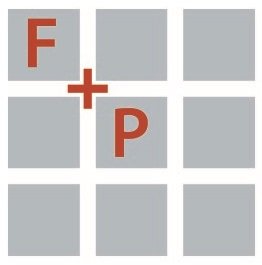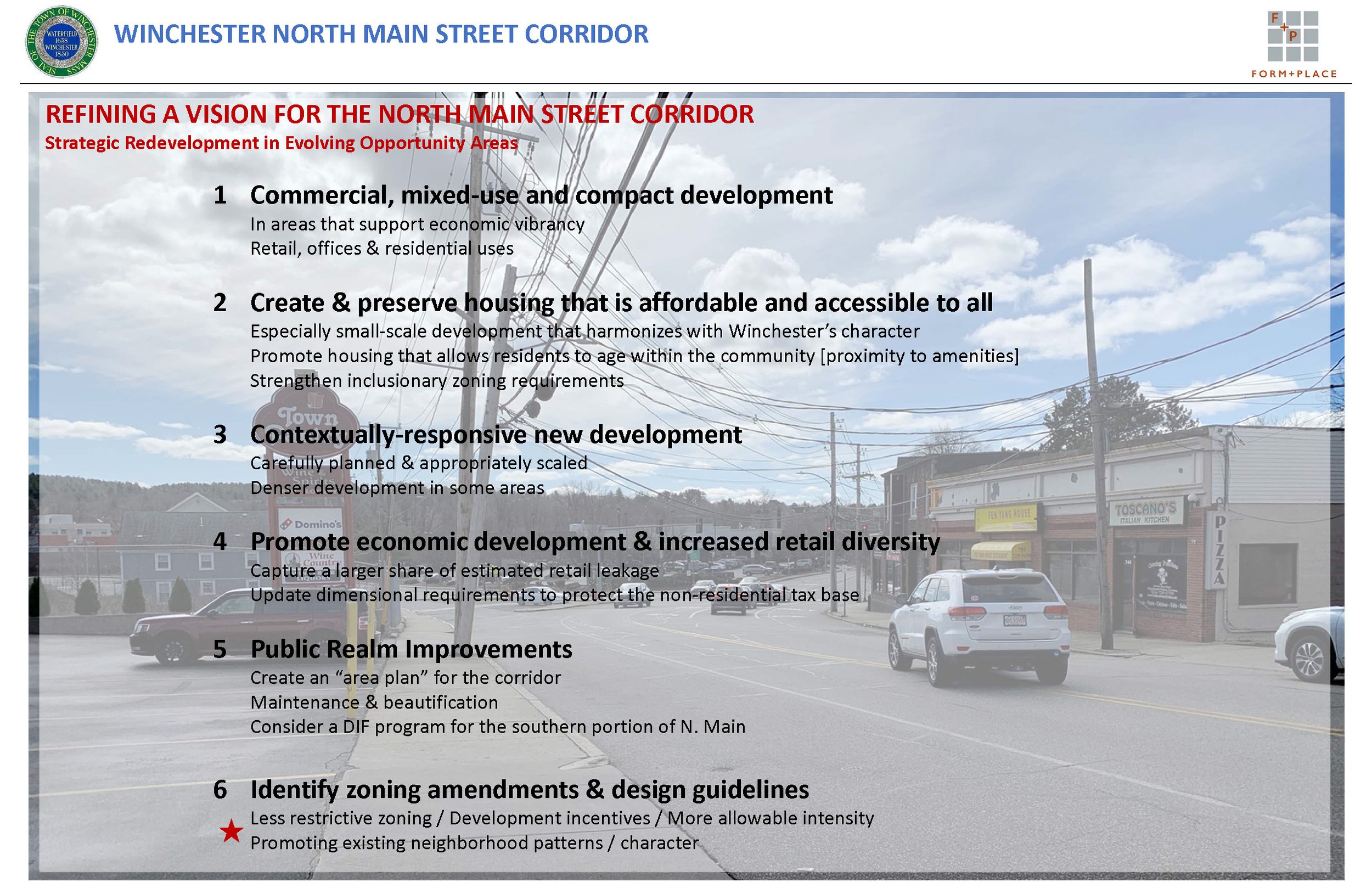2024 Year in Review
/2024 has been another very engaging year for Form + Place as the firm has continued to evolve to focus primarily on planning and urban design projects. After years of working on large scale mixed-use projects from the private development side of the equation, it has been rewarding to be able to share this knowledge base with communities to help them “re-vision” their downtowns, including identifying and implementing goals for economic development, diverse housing options and placemaking. Building on the successful adoption of a Comprehensive Plan for the Town of Groveland at the end of 2023 – a project completed in conjunction with Innes & Associates – 2024 has seen an exciting array of master-planning, zoning and design guidelines initiatives.
We look forward to continued collaboration with what has been a very knowledgeable group of professionals in the planning world, including town planners and economic development staff, as well as the many colleagues with whom we have teamed and shared expertise.
URBAN DESIGN. 2024
North Main Street Corridor, Winchester
North Main Street corridor study & MSMD zoning bylaw
This 2 ½-year planning effort to reframe North Main Street, a corridor identified in the Winchester 2030 Master Plan as an evolving opportunity area, culminated with the adoption of the Main Street Mixed-Use District [MSMD] zoning amendment at Winchester Fall Town Meeting this November. Final coordination of corridor design guidelines – which graphically depict site design and building design criteria – will be completed in the near future. This project involved close collaboration with Winchester’s Town Planner and Planning Board, as well as many stakeholders, whose feedback at numerous in-person and virtual community outreach events helped shape the final direction of the bylaw. This planning effort started well before the adoption of Winchester’s MBTA Communities zoning [overlay] district, which ultimately overlapped part of the corridor. The new MSMD underlying zoning rethinks key development criteria, such as building height, setbacks and parking ratios, in an effort to incentivize mixed-use development with an increased density of diverse housing typologies, and to ensure a vibrant, pedestrian-friendly public realm.
Stearns Square, Springfield
Proposed public realm improvements in Stearns Square, Springfield
This quick study for the Springfield Office of Planning and Economic Development explored the expansion of urban connectivity from Union Station through Duryea Way and Stearns Square to Center Square and the Main Street corridor. The project considered the potential repositioning of the blocks west of Stearns Square to accommodate a flexible concert pavilion on the site of the annual Springfield Jazz & Roots Festival. The enhancement of pedestrian environments through the widening of sidewalks, incorporation of table tops and the use of operable bollards to reroute vehicular traffic during events were among the efforts contemplated to help bolster the placemaking qualities of the district and afford greater opportunities for activities such as outdoor dining. This vision builds on constructs put forward by Form + Place in the 2021 Northeast Downtown District Masterplan which explored enhancements to the Chestnut Street corridor and a series of related public realm improvements, including the redesign of nearby Apremont Triangle.
Eastern Gateway District, Reading
Eastern Gateway District study area in Reading + Open House
The Eastern Gateway District project in Reading, MA, anticipated to be a 1 – 1 ½ year project, is just gaining momentum with a first community Open House meeting just completed this December. Building on previous studies and working to forward goals identified in Reading’s Economic Development Action Plan 2016-2022, this latest effort will explore redevelopment opportunities in a newly defined district – approximately 50 acres in size – that is bisected by the commuter rail line. With walkable proximity to both downtown Main Street shops and the commuter rail station, the goal of this project is to create a new vision for the district that will promote contextual redevelopment which is compatible with surrounding neighborhoods and offers an enhanced public realm, as well as infrastructure improvements that create thoughtful ped / bike / vehicular access and connectivity. Today, the southern portion of the site is home to the Reading Municipal Lighting Dept., the Town’s DPW yard and a handful of commercial and industrial uses, while the northern section is predominantly occupied by large format retail. Form + Place is partnering with TEC and JM Goldson to assist the Town in developing consensus for a district masterplan that will inform a purposeful rezoning and design guidelines effort. The project aims to incentivize public-private partnerships and unlock future development that is appropriately scaled and patterned.
ARCHITECTURE. 2024
Rear patio trellis for Milton home
2024 has also seen a fascinating array of architectural efforts that have included everything from the design of a patio trellis for a beautiful home in Milton to studies for the repositioning of an historic estate in the Berkshires to an extensive permitting effort for four new townhouses in Jamaica Plain.
Four Townhouses [2-duplex concept] in Jamaica Plain
Form + Place has also continued to provide architectural services for Specialized Housing Inc. [SHI], an organization that offers management and caregiving services to adults with disabilities. Many of the congregate living homes that SHI oversees have residents who have aged in place, in some instances now, for over 40 years and these homes require creative updates to address expanded staffing accommodation needs as well as to improve accessibility for residents. One of the homes that we are currently assisting SHI with is looking to upgrade access to the basement level by building a new, generously sized stair, complete with a lift, which will allow for the relocation of certain residential units and common area spaces.
Stair Schematic Design Model for SHI Brookline House
Many of these projects, including the Jamaica Plain townhouses, cross over into the world of planning and zoning and involve complex approvals processes with community meetings and ZBA hearings. One of these “crossover” projects is The Brunswick Hotel in Maine, a project that Form + Place has been working on – in its many iterations – for well over a decade. The Brunswick Hotel sits at the head of Maine Street adjacent to an historic Richard Upjohn church at the gateway to Bowdoin College. The hotel was designed as an anchor for the Maine Street Station masterplan that was completed back in 2008 when Amtrak expanded its service north of Portland, ME to the communities of Freeport and Brunswick. While the station area has been a successful infill project for downtown Brunswick, its presence on Maine Street was limited by an outdated and rundown retail block which did little to connect the town and gown worlds. Form + Place worked with the hotel’s new owners to get approval for the demolition of this one-story retail block, which will serve as usable open space in the near term while the hotel contemplates the future repositioning of the parcel.
Top: Approved demolition concept and completed Phase 1
Bottom: Early schematic site design, The Brunswick Hotel, Brunswick, ME
On a personal note, I would also like to mention how much I continue to value my involvement with the Urban Land Institute and especially my participation on ULI’s Real Estate Advisory Committee [REAC]. I have enjoyed working closely with a fascinating group of colleagues on the REAC to help communities brainstorm solutions to important economic development challenges through Technical Assistance Panels [TAPs]. This year, I worked with TAP chairs Emily Innes and Jim Heffernan to contemplate a challenging public-private puzzle on the site of the Holy Name Parish in Chicopee, MA adjacent to the Elms College campus.
In summary, I would like to say thank you to all of the clients and collaborators who have made 2024 an exceptional year at Form + Place. And a special thank you to John Rufo, Florin Luca and most notably to Gillan Wang for their contributions.
Happy holidays!
Michael A. Wang, AIA, LEED AP BD+C
Form + Place, Inc.
Spring Lawn Estate House residential study for JHR Development, Lenox










































